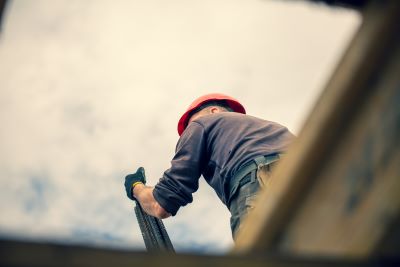 New York has some of the most extensive scaffolding safety laws. Labor Law 240 was enacted in 1885, a period when state legislators had deep concerns about the safety of workers performing jobs at high elevations. During that era, there were many fatal worker falls – and in New York, these falls continue to plague the industry.
New York has some of the most extensive scaffolding safety laws. Labor Law 240 was enacted in 1885, a period when state legislators had deep concerns about the safety of workers performing jobs at high elevations. During that era, there were many fatal worker falls – and in New York, these falls continue to plague the industry.
Labor Law 240: Employer Responsibility for Worker Safety
The first “Scaffold Act” was termed “an Act for the protection of life and limb.” This is certainly true, as a fall from scaffolding often leads to catastrophic or fatal injuries. The law was amended over time, making it clear that safe scaffolding was the responsibility of the employer. Even with its many changes over time, some employers attempt to escape liability by alleging that the worker caused his or her own injuries. Under the law, employers are required to:
- Provide secure scaffolding for workers, properly supported.
- Conduct regular inspections of scaffolding to ensure safety.
- Ensure workers are protected with approved safety harnesses, properly maintained.
- Train employees to correctly build, take down, move and repair scaffolding structures.
- Ensure scaffolding is protected with barricades, catch platforms, toe boards, debris nets, and canopies when required.
Strict Liability and Absolute Liability –
Strict liability is a form of liability in which an entity can be held liable without establishing the intent to harm. Absolute liability is similar in that an entity can be held fully responsible for damages or an injury without proof and without considering the degree of negligence or fault. New York Labor Law 240 imposes strict or absolute liability on general contractors, property owners, and their agents in construction projects, whether they are involved in controlling or supervising the work or not.
The ”Recalcitrant Worker Defense”
Some general contractors or owners have attempted to avoid liability with a defense called the “recalcitrant worker defense,” an argument with these basic elements:
- Adequate safety devices were available to the worker at the jobsite
- It was known by the worker that these devices were available and expected to be used
- The worker decided not to use the safety devices for no reason
- The worker would not have been injured had they used the safety devices as was expected, and was the “proximate cause” of the injuries
When a Construction Worker Injury Case is Challenged
A general contractor or property owner who attempts to avoid liability by arguing that the worker’s actions were the “proximate cause” of the injuries they are likely to find this argument unsuccessful, particularly if an experienced workers’ compensation lawyer challenges it. It must be proven that the worker was aware that the safety devices were available and that he or she was expected to use them – unambiguously. A worker may not have been informed about the safety devices or that he or she was to use them had been following the actions of other construction workers busy on the site.
Need a Workers’ Comp Lawyer? Choose Right.
If you were seriously injured as an employee working on a construction site, you have the right to benefits through the workers’ compensation system. If you have had your claim denied, or your employer attempts the “recalcitrant worker” defense, you need an attorney that has a breadth of experience in workers’ comp cases, Labor Law 240, and who will craft compelling legal arguments to fight for the benefits deserved.
Injured while working construction? We thoroughly prepare every case for the crucible of the courtroom, with meticulous preparation and have a breadth of knowledge of Labor Law 240 and other applicable law.
Contact the New York workers’ comp lawyers at Wingate, Russotti, Shapiro & Halperin, LLP at (212) 986-7353 for a free consultation.